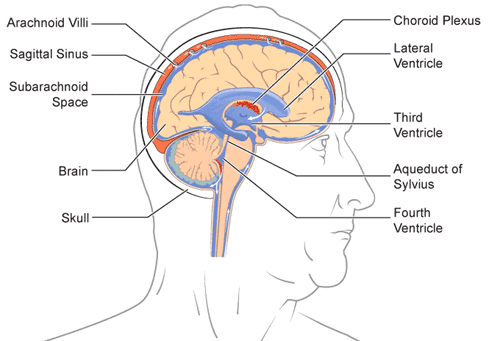
tinyurl.com (Prostate Cancer Survivor) no Erectile Dysfunction w/ Alternative Treatment Part 3/3 Hyperthermia combined with low-dose-radiation as is given at the Valley Cancer Institute in Los Angeles California, has VERY LOW OR NO SIDE EFFECTS. 2/3 of “graduated” patients at VCI report increase on libido, and normal or better sexual functions. the reason why? very simple: – NO SURGERY – NO CHEMOTHERAPY NO HIGH-DOSE-RADIATION OR RADIATION ALONE Hyperthermia is the simple application of heat to the tumor cancer area, which has NO SIDE SEXUAL EFFECTS. the low-dose-radiation allows the body to recover from it very easily. if complemented with a healthy diet and exercise, the cancer treatment results with Hyperthermia are even better and faster. Erectile Dysfunction Provides a comprehensive introduction to the causes, symptoms, and treatments for bladder control problems in women. kidney.niddk.nih.gov – Erectile dysfunction – MayoClinic.com Erectile dysfunction — Comprehensive overview covers treatment, diagnosis of this common condition. mayoclinic.com WebMD Erectile Dysfunction Health Center – Find impotence … Erectile dysfunction affects an estimated 18 million men in the US alone. Here you’ll find impotence information including its causes, impotence drugs, … webmd.com – Prostate cancer: Symptoms – MayoClinic.com Prostate cancer may not cause signs or symptoms in its early stages. Prostate cancer that is more advanced may cause signs and symptoms such as …Video Rating: 5 / 5
Natural Bladder Control for Men and Women
Article by Paul Rodgers
The bladder is found in the lower part of the abdomen. your bladder is a hollow pelvic organ with flexible, muscular walls that stores urine. in males, it is superior to the prostate, and separated from the rectum by the rectovesical excavation. in females, the bladder is separated from the rectum by the rectouterine excavation, and it is separated from the uterus by the vesicouterine excavation. Bladder problems are not a natural consequence of aging.
Incontinence is uncontrollable leaking of urine from the bladder. Incontinence is both a health problem and a social problem. Incontinence is often worse if you are overweight, have a cough or a urine infection and after the menopause. Incontinence occurs if the bladder muscles contract or the muscles surrounding the urethra relax without warning.
Symptoms of a bladder infection may include going to the bathroom frequently, passing blood in the urine, cloudy and odorous urine, increased spasticity in the lower extremities, fever and chills. a person with any of the following symptoms should see a doctor: blood in the urine (urine that looks bright red or rusty), pain during urination, passing urine often, or feeling the need to urinate even though nothing comes out. Restricting alcoholic beverages, carbonated sodas, coffee and other caffeinated products, and beverages and foods with artificial sweeteners appears to reduce symptoms in some people.
Overactive bladder is a significant health problem. An overactive bladder is more common in women, and in older adults, but can be found in younger folks and in men. Overactive bladder (OAB) is a treatable medical condition caused by involuntary bladder muscle spasms. the bladder muscle can be such that it cannot contract (ie it is always relaxed) or overactive and the sphincters (especially, the voluntarily controlled one) uncontrollable and either too relaxed or too tight.
There are three key symptoms of an overactive bladder. You may have only the first two, or all three.
1- Frequency, needing to empty your bladder more frequently than usual. going to the toilet more than eight times in 24 hours is usually regarded as unusual.
2- Urgency, the sudden feeling that you have to go right now.
3- Urgency incontinence. This means that your need to go is so urgent that you lose control before you can get to a toilet.
Of all those who have an overactive bladder, 40% have urgency incontinence.apart from overactive bladder, another common cause of bladder leaking is called stress incontinence.
The typical person with overactive bladder is an adult who urinates more than 8 times per 24 hours with a voiding volume averaging approximately 150ml. Pharmacological therapy for treatment of overactive bladder is based on the use of muscarinic receptor antagonists. As common a problem as overactive bladder is, patients seldom mention it to health care providers.
Cancer occurs when cells in the bladder begin to grow uncontrollably affecting the normal function of the organ, and, sometimes surrounding organs. in fact, patients with bladder cancer sometimes have a similar type of cancer in the lining of the kidneys,ureters, or urethra. therefore, a complete evaluation of the urinary system is recommended for patients diagnosed with a cancer of the kidney, bladder, ureter, or urethra. Treatment recommendations for some patients may be influenced by the type of cancer. Fortunately, when bladder cancer symptoms are diagnosed early, bladder cancer is treatable with a variety of treatment options.
Treatment options depend on the stage of bladder cancer. Treatment for urinary incontinence varies according to the type of incontinence. it can include both drugs and surgery. the chance of recovery from the disease (prognosis) and the choice of treatment for bladder cancer depend on the stage of the cancer (whether it is just in the lining of the bladder or has spread to other places in the body) and the patient’s general state of health. a licensed physician should be consulted for diagnosis and treatment of any and all medical conditions.
About the Author
Paul Rodgers specializes in marketing online fitness, diets, health and beauty products and services. You are invited to visit Natural Bladder Control for Men and Women
Related Blogs
- Splenda and Bladder Control Problems
- Bladder Control Problems
- How to Identify Prostate Cancer Symptoms Early for Prompt …
- From a Nurse – Prostate Cancer Symptoms Treatments and Diet …
- Cancer Survival Tips | Health News